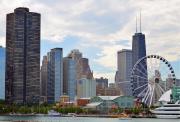Introduction to Green Building Guidelines and Standards
Detailed specifications have been developed by the US Green Building Council ![]() and the Green Building Initiative.
and the Green Building Initiative. ![]() Green “stretch” codes have been developed by the International Association of Plumbing and Mechanical Officials
Green “stretch” codes have been developed by the International Association of Plumbing and Mechanical Officials ![]() and the International Code Council.
and the International Code Council. ![]() But many jurisdictions (municipalities and other local authorities and state governments with the power to mandate, approve, disapprove, or influence project design and construction) are also developing their own “green” guidelines and minimum standards for new construction and renovations.
But many jurisdictions (municipalities and other local authorities and state governments with the power to mandate, approve, disapprove, or influence project design and construction) are also developing their own “green” guidelines and minimum standards for new construction and renovations.
It is important to understand the difference between green building standards and green building guidelines, because while guidelines do provide thresholds for efficiency, compliance is usually voluntary. On the other hand, standards provide definitive efficiency thresholds, but are written in language that is enforceable and is also readily adopted by reference into codes and other regulations.
Whether as voluntary guidelines or as mandatory codes, there are design or construction practices, technologies, performance thresholds and metrics in a variety of categories. Typical requirements for water efficiency and metering include the following:
- Plumbing fixtures and fixture fittings; residential appliances (clothes washers, dishwashers)
- Water treatment equipment (softeners, filtering systems); landscape & landscape irrigation
- Pools, fountains, and spas
- Cooling towers
- Decorative and recreational water features
- Water reuse & alternate sources of water (graywater, rainwater and stormwater, cooling condensate and cooling tower blowdown)
- Foundation drain water
- Specialty processes, appliances and equipment (food service, medical, laboratories, laundries, others)
- Metering & submetering
- Once-through cooling
- Vegetated green roofs
- Building water pressure
Members see more great content.
To learn more about membership or sign up to become a member, please visit our Members section.





